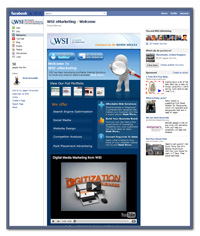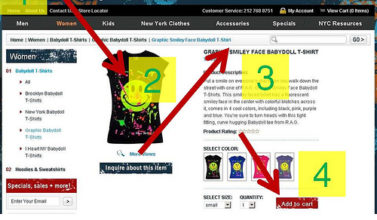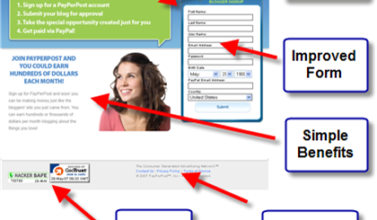
A website maintenance plan; why would you need one? Your site is built, it’s live and it’s working, so it’s all done and dusted isn’t it? No it isn’t. Let’s compare it with insurance. When we think about whether we need insurance of any kind, we don’t really question it. Of course we need insurance! What if we damage the car or are involved in an accident? What if I get ill while away on holiday? What if someone smashes the television? (come on, we’ve all seen the Wii ads on TV and I’m betting we all know someone who’s done something similar!)?
We pay all sorts of insurance premiums for all sorts of things and increasingly we’re paying not just for accident or damage insurance but for maintenance contracts too. Boiler maintenance, home appliance maintenance, regular car service and maintenance are just a few. Policies that make sure our appliances and vehicles are maintained to ensure they don’t break down, or are quickly repaired when they do.
Your website is no different. Once you’ve built it you need to maintain it. It needs to be serviced regularly. You may need to replace parts from time to time or upgrade it if it’s starting to look tired. If it breaks you need to get it repaired quickly.
There are many reasons a website can stop working, but usually it’s because something around it has changed. More often than not there’s been some sort of technology change or upgrade that means you now need to change something on your site for it to keep up.
If you don’t have a website maintenance plan here are 4 reasons why you should consider one. If you do have one already, it’s worth checking the small print to see that everything is covered.
1. Security Updates
A report from Forbes last year claimed that 30,000 websites are hacked each day! Many people make the mistake of thinking that their business isn’t big enough or high profile enough to be the target of hackers. Wrong! Most hacks are done with the sole aim of seeing how much disruption can be caused or just to prove that they can be done. Quite often smaller sites and blogs are targetted simply because they are smaller and so likely to be less secure which makes them easier to exploit. Your average hacker doesn’t consider the impact of their actions on you and your business. If your site is not up to date with the latest security fixes and patches then you are leaving yourself wide open. This also applies to your online forms, comment boxes and plug ins. In addition, if your site is on a shared server, an attack on your site can put every other site on that server at risk.
2. Good user experience
When major technology updates happen, e.g. a browser update (Chrome, Firefox, Internet Explorer etc.) it can have an impact on the way your website, or parts of your website work. More often than not, especially when using forms or plug ins, it results in something breaking and not working at all. It also works the other way, if you update a plug in and your browser or site system can’t work with that update that part of your site can break. When people come to your website they want to have the easiest experience possible and if your form or link doesn’t do what it should, more often than not, they’ll leave.
3. Potential sales impact
Your website is your shop window. It’s the place where people will go and check you out. And if you sell your products online, you want those visitors to convert into buyers. If someone clicks on a button to find out more information and the button doesn’t work, what impression of your business will that give? Broken forms can lose you leads and enquiries: broken shopping baskets and payment systems will definitely lose you sales.
4. Long term cost savings
If you keep your site maintained and updated regularly, there’s less chance of something major going wrong that will cost a lot of money to put right. You have to weigh up the pros and cons. A monthly sum to make sure your site is secure and working properly, versus the possibility and cost of a complete site rebuild in a worst case scenario. In addition, more often than not, when a regular website maintenance plan is in place time is regularly allocated for your site updates. When you have a one off project that needs to be assessed and costed it’s very likely that existing work schedules and resources will be a factor in the speed at which the work can be completed.
A website maintenance plan is your insurance policy for your website and your business. If your site stops working for one day, one week or longer, what will the impact be on your business? Can you afford for that to happen? A maintenance plan is a standard requirement when we build websites because we don’t want our clients to be at risk. If you’re in the process of designing or building a website, make sure you ask your developer or agency what will be in place once the site is built to ensure that it stays up to date, secure and fully functioning.
If you want help or advice about maintaining your website, get in touch.
Image Copyright: convisum / 123RF Stock Photo
Related Post
Effective Facebook Marketing...
With over 600 million users, Facebook represents the single most connected platform on...
- March 1, 2011
- By Nadine Thomas
- Latest Online Trends
Monitor, Influence and Lead...
Get Actively Involved in the Outcome of Search Results Don’t take negative publicity...
- April 28, 2011
- By Rob Thomas
- ORM
Free Online Reputation...
Listen to What’s Being Said About You Online (Free online reputation monitoring...
- May 5, 2011
- By Rob Thomas
- ORM
Top Tips for Product Page...
As the internet evolves and user expectation becomes increasingly sophisticated, creating...
- May 31, 2011
- By Rob Thomas
- e-Commerce
How To Drive Sales With...
Landing pages have long been the primary tool of the web-savvy marketer. Whether the...
- June 12, 2011
- By Nadine Thomas
- e-Commerce
Top Tips for Product Page...
Your website marketing activities are geared to getting a qualified audience to your...
- June 14, 2011
- By Rob Thomas
- e-Commerce











Leave a Comments